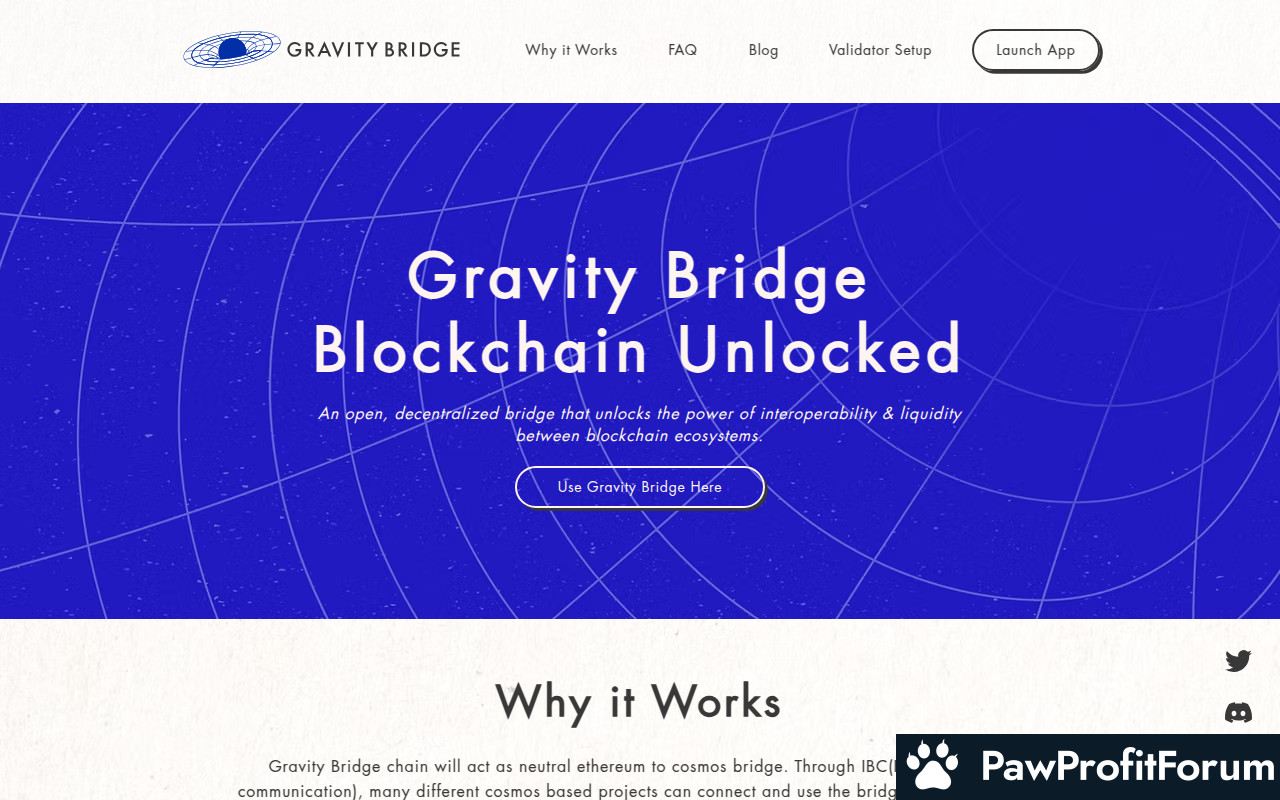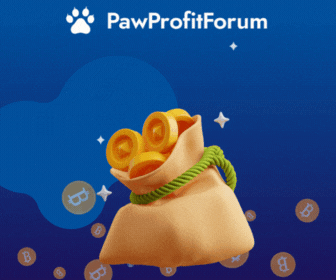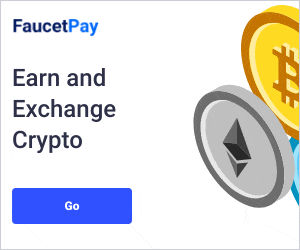Gravity Bridge chain will act as neutral ethereum to cosmos bridge. Through IBC(Interblockchain communication), many different cosmos based projects can connect and use the bridge to access ERC20 assets, like dai or usdc, without having to operate the gravity orchestrator on their own chain.
Gravity will be able to bring ERC20 assets from Ethereum into Cosmos, as well as Cosmos assets to Ethereum ERC20 representations. ATOM, and any other asset in the Cosmos ecosystem, will be able to trade on Uniswap and other Ethereum AMMs, and interact with Ethereum DeFi like any ERC20 token.
The significance of Graviton and the Gravity Bridge lies in their ability to enhance liquidity and accessibility across different blockchain ecosystems. By allowing assets from the Cosmos ecosystem, including ATOM and others, to be traded on Ethereum-based Automated Market Makers (AMMs) and interact with Ethereum's decentralized finance (DeFi) platforms, Graviton extends the utility and reach of these assets beyond their native environments. This interoperability is a key step towards a more interconnected and efficient blockchain space, where assets can move freely across different networks, thereby broadening the scope of DeFi and other blockchain-based applications.
As with any investment in the cryptocurrency market, it's important to conduct thorough research and consider the volatility and risks associated with digital assets. The value of cryptocurrencies can fluctuate widely, and while the technology and infrastructure projects like Graviton provide are foundational to the blockchain ecosystem's growth, market dynamics can be unpredictable.
Moreover, the system utilizes invariants, which are conditions that are constantly checked to prevent and halt any exploits. These invariants act as a safety net, detecting anomalies that could indicate a security breach, thereby enabling immediate action to mitigate any potential threats.
The Gravity module is another critical component of Graviton's security. It is tasked with minting Cosmos tokens that represent ERC20 tokens on Ethereum, working in tandem with the orchestrator. This collaboration is vital for the secure transfer of assets between the Cosmos and Ethereum ecosystems, ensuring that tokens are accurately represented and securely managed across both platforms.
In addition to these internal mechanisms, Graviton leverages external security measures. Encryption is employed to protect data and transactions, while artificial withdrawal proofs and the prevention of driver access to hardware add another layer of security against unauthorized access and potential exploits.
Partnerships with established protocols in the blockchain space further enhance Graviton's security posture. These collaborations bring additional expertise and technologies to bolster the platform's defenses, ensuring compliance with the Cryptocurrency Security Standards. These standards are a set of best practices designed to secure digital assets, providing a benchmark for security that Graviton adheres to.
The integration of Interblockchain communication (IBC) allows for seamless connectivity between different Cosmos-based projects and the Gravity Bridge. This not only facilitates the movement of ERC20 assets between Ethereum and Cosmos but also ensures that these transactions are conducted securely, leveraging the collective security measures of the interconnected ecosystems.
By combining a decentralized validator set, regular audits, the use of invariants, encryption, partnerships, and adherence to established security standards, Graviton provides a robust security framework. This comprehensive approach ensures the safe and secure operation of the Gravity Bridge, protecting users' assets and maintaining trust in the platform.
Beyond its role in bridging these two major blockchain platforms, Graviton's utility extends into several key areas. It is utilized within a specific auction application, where it acts as the primary currency for bidding. This application underscores its importance in decentralized token distribution, allowing users to acquire and distribute tokens in a user-driven and decentralized manner.
Additionally, Graviton is used to pay for transaction fees, ensuring the smooth operation and maintenance of network activities. Its integration into DeFi highlights its role in governance, where holders can potentially influence the direction and development of the projects it is associated with. This governance aspect is crucial for maintaining a decentralized and user-driven ecosystem.
The token's utility is further expanded through its involvement in partnerships and collaborations aimed at advancing blockchain adoption. By providing tools for increased liquidity and facilitating the integration of blockchain technology into various applications, Graviton plays a pivotal role in the broader adoption and functionality of cryptocurrencies and blockchain technology.
Investors and users interested in Graviton should conduct thorough research to understand its functionalities, use cases, and the ecosystems it interacts with. This due diligence is essential for anyone looking to engage with Graviton or similar blockchain technologies, ensuring informed decision-making in the dynamic and evolving cryptocurrency landscape.
One of the earliest notable events was the release of collectible postcards on a leading cryptocurrency exchange platform. This initiative showcased Graviton's ability to merge the worlds of digital assets and collectibles, offering users a unique way to engage with the platform.
Following this, Graviton launched the Big Time Wiki, a comprehensive resource aimed at educating users about the platform and its offerings. This move underscored Graviton's dedication to transparency and user education, ensuring that both new and experienced users have access to reliable information.
The announcement of Kondux GDN and kNFT technology marked another significant milestone for Graviton. This development highlighted Graviton's innovative approach to digital assets, leveraging cutting-edge technology to enhance the user experience and expand the platform's capabilities.
In addition to these developments, Graviton has also forged partnerships with other blockchain projects, demonstrating its commitment to collaboration and ecosystem growth. Hosting events and accelerator programs for startups further illustrates Graviton's role in supporting innovation and fostering a vibrant community of developers and entrepreneurs.
A key technological advancement for Graviton has been the introduction of the Gravity Bridge chain, designed to facilitate seamless asset transfers between the Ethereum and Cosmos ecosystems. This bridge enables the exchange of ERC20 and Cosmos assets, integrating them into the broader DeFi landscape and offering users greater flexibility and access to a wider range of digital assets.
The surge of the Graviton Zero token in 2024 represents a culmination of these efforts, reflecting the growing recognition and adoption of Graviton's platform and its contributions to the blockchain space.
As the landscape of cryptocurrency continues to evolve, it's essential for enthusiasts and investors to conduct thorough research and stay informed about the latest developments.
Gravity will be able to bring ERC20 assets from Ethereum into Cosmos, as well as Cosmos assets to Ethereum ERC20 representations. ATOM, and any other asset in the Cosmos ecosystem, will be able to trade on Uniswap and other Ethereum AMMs, and interact with Ethereum DeFi like any ERC20 token.
What is Graviton?
Graviton is a cryptocurrency that operates within the broader ecosystem of blockchain technology, specifically focusing on bridging the gap between the Ethereum and Cosmos blockchains. It serves as a crucial infrastructure piece, enabling seamless interoperability between these two major blockchain networks through the Gravity Bridge chain. This bridge facilitates the transfer of ERC20 assets, such as stablecoins and other tokens, from Ethereum to Cosmos and vice versa, without requiring individual Cosmos-based projects to manage the complex operations of the gravity orchestrator on their own chains.The significance of Graviton and the Gravity Bridge lies in their ability to enhance liquidity and accessibility across different blockchain ecosystems. By allowing assets from the Cosmos ecosystem, including ATOM and others, to be traded on Ethereum-based Automated Market Makers (AMMs) and interact with Ethereum's decentralized finance (DeFi) platforms, Graviton extends the utility and reach of these assets beyond their native environments. This interoperability is a key step towards a more interconnected and efficient blockchain space, where assets can move freely across different networks, thereby broadening the scope of DeFi and other blockchain-based applications.
As with any investment in the cryptocurrency market, it's important to conduct thorough research and consider the volatility and risks associated with digital assets. The value of cryptocurrencies can fluctuate widely, and while the technology and infrastructure projects like Graviton provide are foundational to the blockchain ecosystem's growth, market dynamics can be unpredictable.
How is Graviton secured?
Graviton's security framework is multifaceted, incorporating several layers of protection to safeguard its operations and users' assets. At its core, the Gravity Bridge employs a decentralized set of validators. These validators play a crucial role in maintaining the integrity and security of the bridge by ensuring transactions are processed accurately and securely. Regular audits are conducted to scrutinize the system for vulnerabilities, ensuring that any potential security issues are identified and addressed promptly.Moreover, the system utilizes invariants, which are conditions that are constantly checked to prevent and halt any exploits. These invariants act as a safety net, detecting anomalies that could indicate a security breach, thereby enabling immediate action to mitigate any potential threats.
The Gravity module is another critical component of Graviton's security. It is tasked with minting Cosmos tokens that represent ERC20 tokens on Ethereum, working in tandem with the orchestrator. This collaboration is vital for the secure transfer of assets between the Cosmos and Ethereum ecosystems, ensuring that tokens are accurately represented and securely managed across both platforms.
In addition to these internal mechanisms, Graviton leverages external security measures. Encryption is employed to protect data and transactions, while artificial withdrawal proofs and the prevention of driver access to hardware add another layer of security against unauthorized access and potential exploits.
Partnerships with established protocols in the blockchain space further enhance Graviton's security posture. These collaborations bring additional expertise and technologies to bolster the platform's defenses, ensuring compliance with the Cryptocurrency Security Standards. These standards are a set of best practices designed to secure digital assets, providing a benchmark for security that Graviton adheres to.
The integration of Interblockchain communication (IBC) allows for seamless connectivity between different Cosmos-based projects and the Gravity Bridge. This not only facilitates the movement of ERC20 assets between Ethereum and Cosmos but also ensures that these transactions are conducted securely, leveraging the collective security measures of the interconnected ecosystems.
By combining a decentralized validator set, regular audits, the use of invariants, encryption, partnerships, and adherence to established security standards, Graviton provides a robust security framework. This comprehensive approach ensures the safe and secure operation of the Gravity Bridge, protecting users' assets and maintaining trust in the platform.
How will Graviton be used?
Graviton serves as a multifaceted token within the cryptocurrency ecosystem, primarily facilitating a bridge between the Ethereum and Cosmos blockchains. This interoperability function allows for the seamless transfer of ERC20 assets from Ethereum to Cosmos, and vice versa, enabling assets within the Cosmos ecosystem, such as ATOM, to be traded on Ethereum-based Automated Market Makers (AMMs) and to participate in Ethereum's decentralized finance (DeFi) ecosystem as if they were native ERC20 tokens.Beyond its role in bridging these two major blockchain platforms, Graviton's utility extends into several key areas. It is utilized within a specific auction application, where it acts as the primary currency for bidding. This application underscores its importance in decentralized token distribution, allowing users to acquire and distribute tokens in a user-driven and decentralized manner.
Additionally, Graviton is used to pay for transaction fees, ensuring the smooth operation and maintenance of network activities. Its integration into DeFi highlights its role in governance, where holders can potentially influence the direction and development of the projects it is associated with. This governance aspect is crucial for maintaining a decentralized and user-driven ecosystem.
The token's utility is further expanded through its involvement in partnerships and collaborations aimed at advancing blockchain adoption. By providing tools for increased liquidity and facilitating the integration of blockchain technology into various applications, Graviton plays a pivotal role in the broader adoption and functionality of cryptocurrencies and blockchain technology.
Investors and users interested in Graviton should conduct thorough research to understand its functionalities, use cases, and the ecosystems it interacts with. This due diligence is essential for anyone looking to engage with Graviton or similar blockchain technologies, ensuring informed decision-making in the dynamic and evolving cryptocurrency landscape.
What key events have there been for Graviton?
Graviton has experienced several pivotal moments that have significantly shaped its trajectory within the cryptocurrency and blockchain landscape. These events highlight Graviton's commitment to innovation, collaboration, and expansion in the rapidly evolving world of digital assets.One of the earliest notable events was the release of collectible postcards on a leading cryptocurrency exchange platform. This initiative showcased Graviton's ability to merge the worlds of digital assets and collectibles, offering users a unique way to engage with the platform.
Following this, Graviton launched the Big Time Wiki, a comprehensive resource aimed at educating users about the platform and its offerings. This move underscored Graviton's dedication to transparency and user education, ensuring that both new and experienced users have access to reliable information.
The announcement of Kondux GDN and kNFT technology marked another significant milestone for Graviton. This development highlighted Graviton's innovative approach to digital assets, leveraging cutting-edge technology to enhance the user experience and expand the platform's capabilities.
In addition to these developments, Graviton has also forged partnerships with other blockchain projects, demonstrating its commitment to collaboration and ecosystem growth. Hosting events and accelerator programs for startups further illustrates Graviton's role in supporting innovation and fostering a vibrant community of developers and entrepreneurs.
A key technological advancement for Graviton has been the introduction of the Gravity Bridge chain, designed to facilitate seamless asset transfers between the Ethereum and Cosmos ecosystems. This bridge enables the exchange of ERC20 and Cosmos assets, integrating them into the broader DeFi landscape and offering users greater flexibility and access to a wider range of digital assets.
The surge of the Graviton Zero token in 2024 represents a culmination of these efforts, reflecting the growing recognition and adoption of Graviton's platform and its contributions to the blockchain space.
As the landscape of cryptocurrency continues to evolve, it's essential for enthusiasts and investors to conduct thorough research and stay informed about the latest developments.
| Website | www.gravitybridge.net/ |
| Website | github.com/Gravity-Bridge/Gravity-Docs/tree/main/docs |
| Socials | twitter.com/gravity_bridge |
| Socials | reddit.com/r/GravityBridgeOfficial |
| Socials | discord.gg/d3DshmHpXA |
| Contracts | ibc/E9...672B44 |
| Explorers | www.mintscan.io/gravity-bridge |










